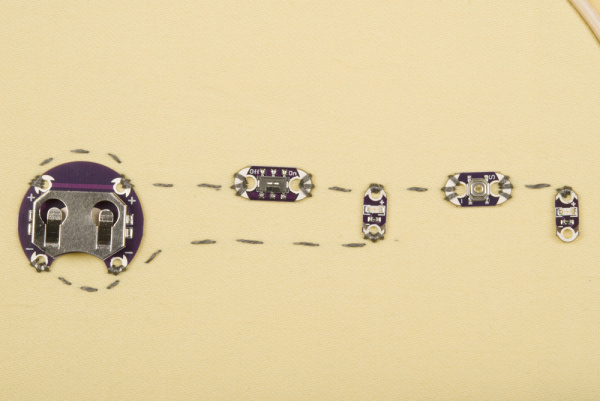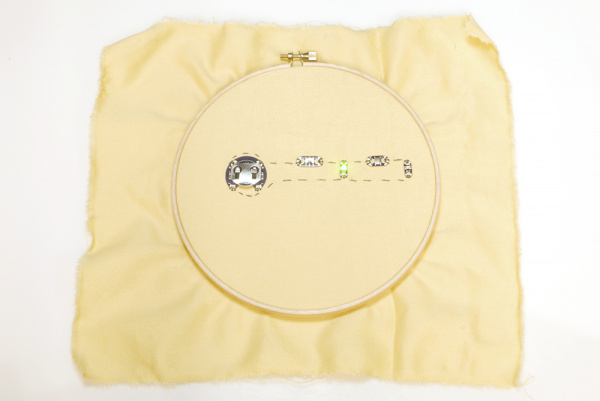LDK Experiment 3: Buttons and Switches
This Tutorial is Retired!
This tutorial has been retired. For the most recent information, please refer to the updated tutorial.
View the updated tutorial: LilyPad Buttons and Switches
Negative Trace
Time to sew down the negative trace, which will be much faster, since there are no buttons or switches to fuss with!
Starting with a newly threaded needle, stitch the negative pins of the battery down to the fabric, to each other, and to the negative pin of the first LED, which you should also stitch down.
Sew from here to the negative pin of the second LED, and sew it down. Cut and knot your thread.
Turn off your switch, then slide your battery into the holder, smooth side up. Nothing should light up; if it does, double check that there isn’t any thread touching under your switch. When you turn your switch on, the first LED should come on.
Press the button while the switch is still on, and both LEDs should light up.
How it Works
The switch works like a light switch, regulating all current going through the circuit. When it is turned to ‘on’, current will flow through the same as it would if there were no switch at all. When it is turned ‘off’, it will interrupt the circuit by disconnecting the conductive materials inside (an open circuit), and nothing will light up regardless of whether the button is pressed.
The button interrupts by default, and only creates an electrical connection when it is pressed.
Both of these components affect current flow only to those components that come after them in a parallel circuit. If you put an LED into the circuit before the switch, it would not turn off when the switch was turned off. Similarly, the LED placed after the button is off unless the button is pushed, but the LED that comes before the button isn’t subject to it.



